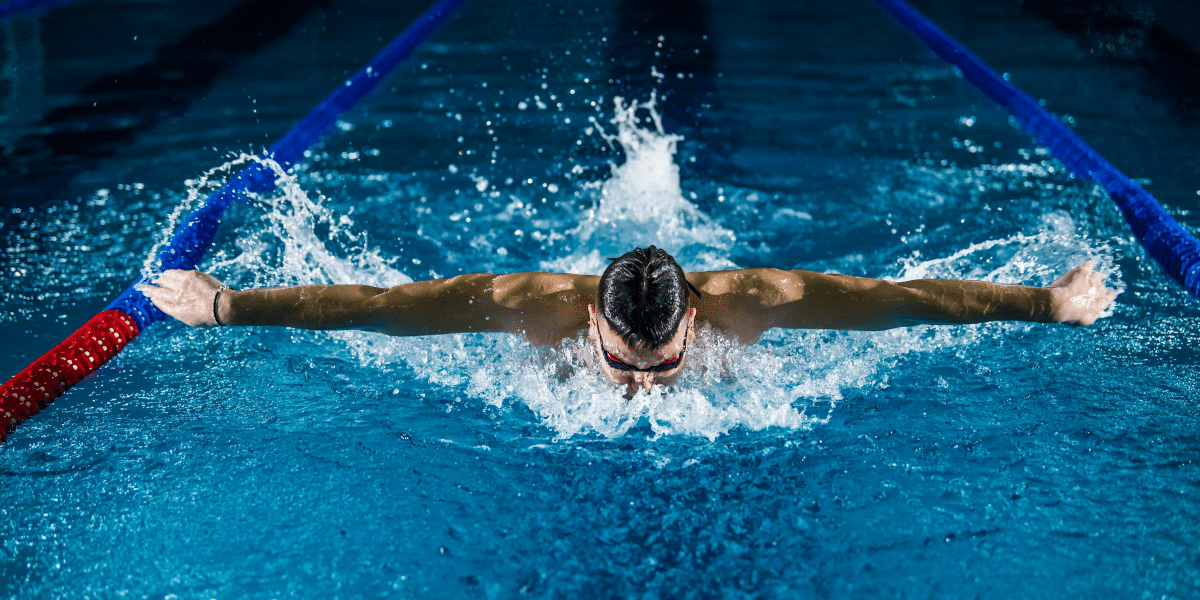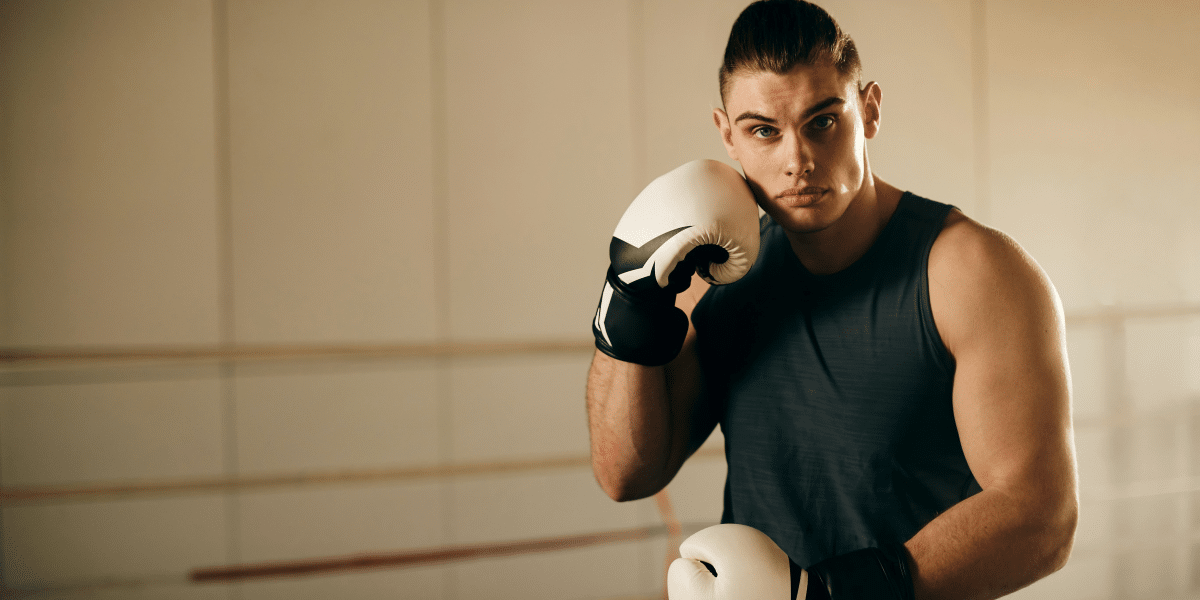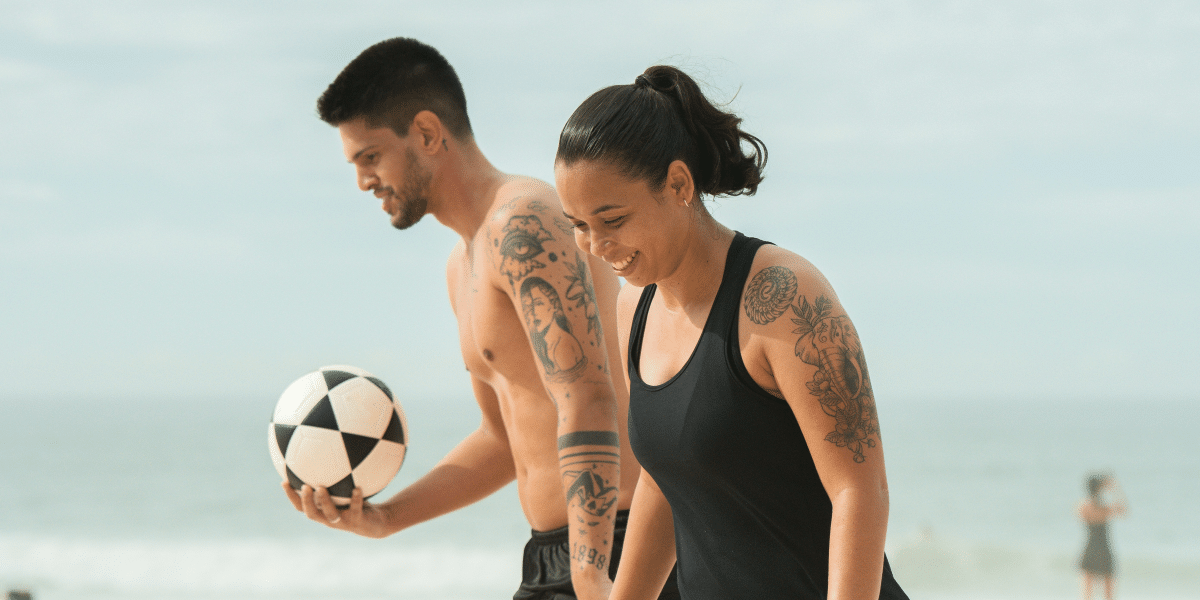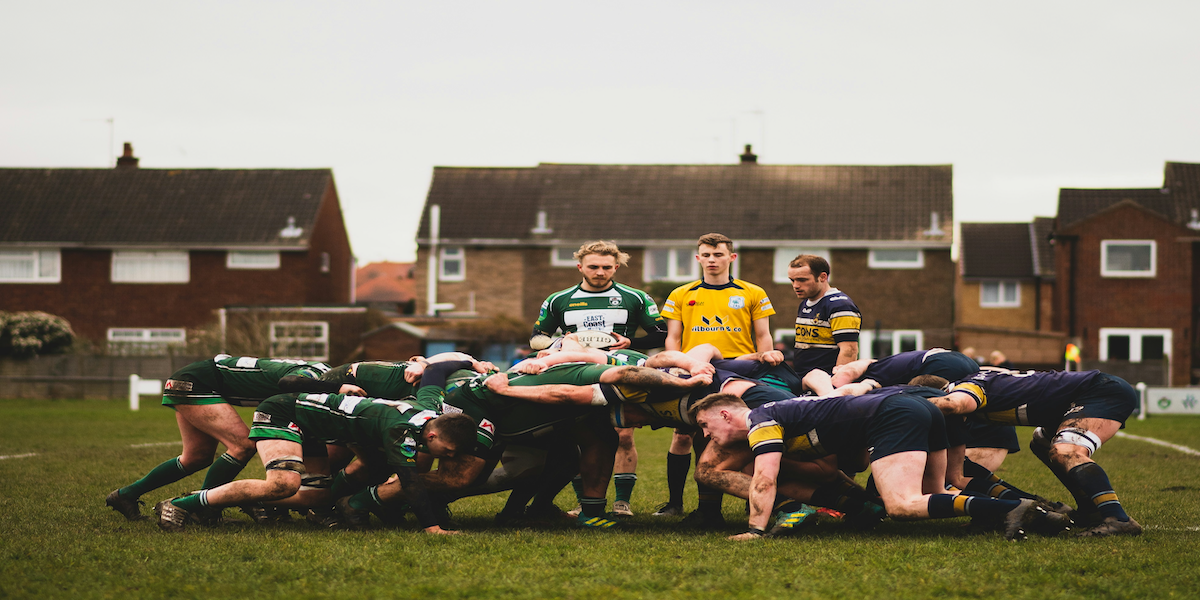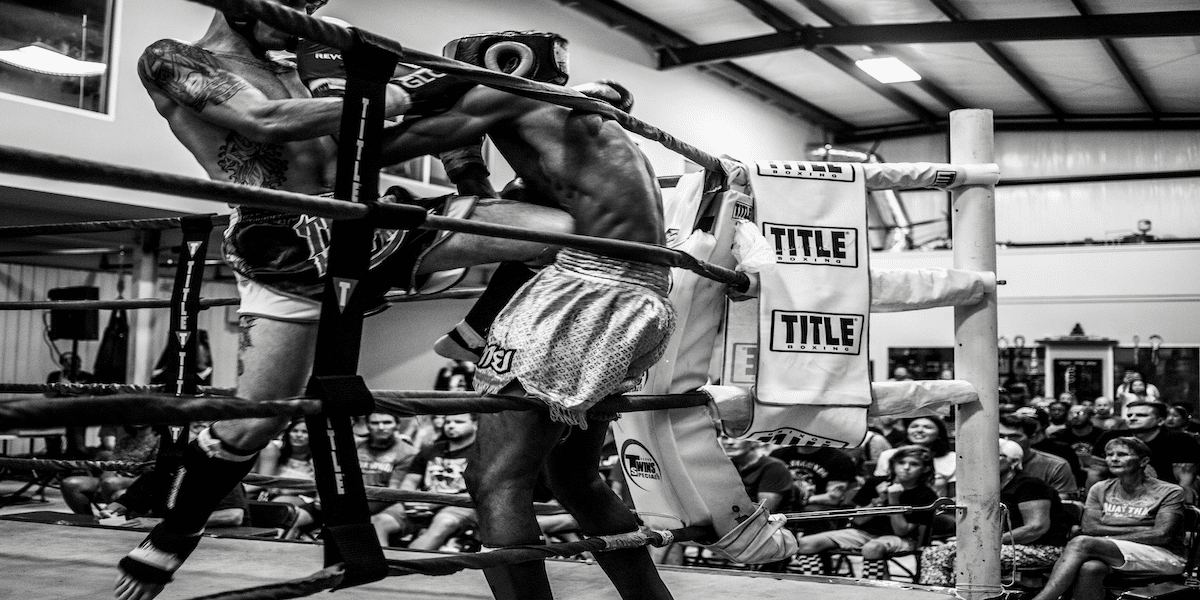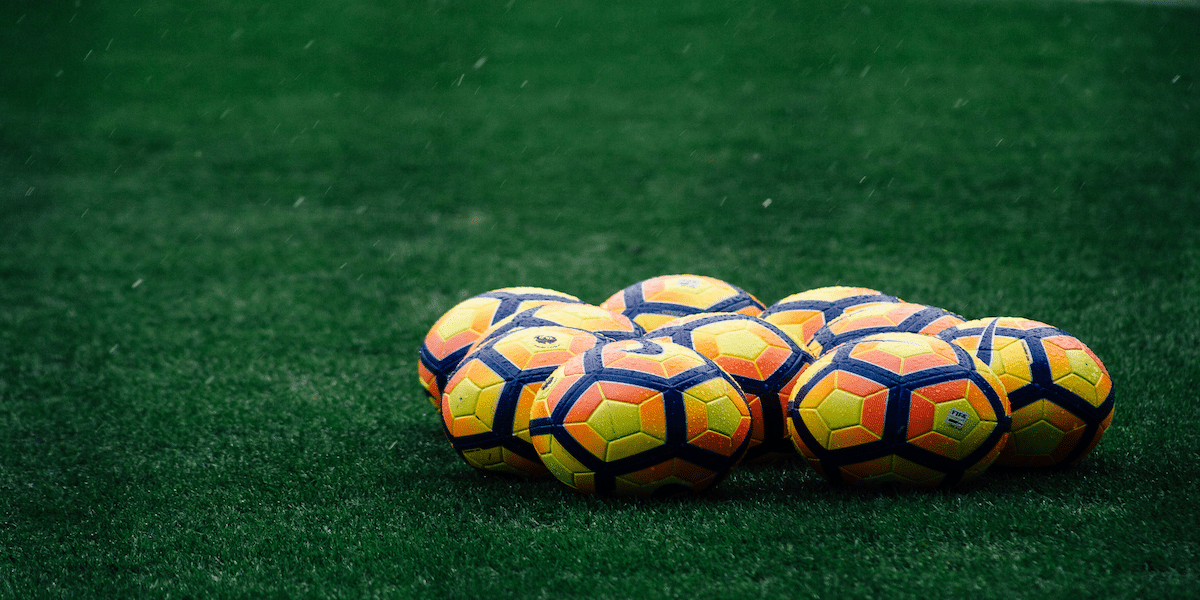Image commercially licensed from Unsplash
From the vibrant streets of Bangkok to the rural villages nestled among Thailand’s picturesque landscapes, one common thread runs deep: Muay Thai. This combat sport, often referred to as Thai boxing, has its roots intertwined with Thai history, culture, and national pride.
Ancient Beginnings: Nai Khanom Tom and Muay Boran
Muay Thai’s origin dates back centuries, steeped in tales of bravery, resilience, and unparalleled skill. One such tale recounts the story of Nai Khanom Tom, often heralded as a Muay Thai legend. As legend goes, during the wars between the Burmese and the Siamese kingdoms, Khanom Tom was captured and, to earn his freedom, was tasked to display his fighting prowess against Burmese fighters. Using his mastery of Muay Boran – the ancient form of Muay Thai – he defeated every challenger, highlighting the superiority of Thai boxing techniques.
Muay Boran was initially developed for the Siamese army as a means of unarmed combat after soldiers would find themselves without weapons on the battlefield. These ancient battlefield tactics, combined with cultural practices, evolved into the modern Muay Thai we recognize today. With online platforms like Muay Thai Records, enthusiasts can now follow and learn more about today’s Muay Thai fighters, connecting the historical roots of the sport to its contemporary evolution.
The Art of Eight Limbs: Technique and Mastery
Muay Thai, often dubbed the “Art of Eight Limbs”, allows the use of elbows, knees, shins, and fists, making it distinct from other martial arts and combat sports. Every strike, be it a knee strike, elbow strike, or leg kick, is delivered with precision, honed over years of rigorous Muay Thai training.
The ram muay, a traditional dance performed by Thai boxers before their bouts, encapsulates the spiritual and cultural significance of the sport. As the fighters gracefully move around the boxing ring, they pay homage to their trainers, the sport, and the spirits that watch over them.
Modern Adaptations and Global Recognition
Today’s Muay Thai fighters undergo intense training regimens, sharpening their techniques and building strength, endurance, and muscle memory. These dedicated Muay Thai practitioners learn not just the physical techniques but also imbibe the discipline, respect, and honor that the sport embodies.
From using hemp rope in ancient times to modern gloves, protective gear, and boxing gloves, Muay Thai has adapted while maintaining its core principles. This evolution has brought Muay Thai to the international stage, with MMA fighters and those from other combat sports integrating Muay Thai techniques into their arsenals.
The national sport of Thailand, Muay Thai, has garnered a massive following, with Thai fighters and Thai boxers becoming household names not just in Thailand but globally.
Training and Self-Defense
While many are drawn to Muay Thai for its rich history or the allure of the fighting ring, many others embrace it for self-defense. Muay Thai training equips individuals with techniques that are practical for real-world situations. The push kick, for instance, can create distance between the practitioner and an assailant, while the clinch – a position where one fighter tries to manipulate their opponent’s head backward – is a powerful control technique.
Furthermore, training camps sprawled across Thailand offer enthusiasts, be they local champions or international aspirants, a chance to train under seasoned professionals, deepening their understanding and appreciation for this martial art.
To understand Thai history and culture, one must understand Muay Thai. Beyond the punches, kicks, and clinches, Muay Thai is a reflection of the Thai spirit, resilience, and their age-old traditions. Whether you’re an ardent fan, a budding Thai boxer, or someone simply captivated by the grace and power of the sport, Muay Thai resonates with all, transcending boundaries and leaving an indelible mark on the heart.
The Evolution of Muay Thai: Chronicles and Records
In retracing the steps of Muay Thai’s journey, it’s essential to highlight how the sport has changed and grown over time. But how can one access the annals of its rich history, or delve deep into the nuances of Thai boxing? This is where dedicated platforms like “Muay Thai Records” play a pivotal role.
-
Chronicling Muay Thai Fighters and Their Legacy
Every sport has its heroes, those who, through their skill, dedication, and spirit, have defined eras and inspired generations. In the realm of Muay Thai, fighters from all walks of life have ascended to legendary status. “Muay Thai Records” offers enthusiasts and researchers a comprehensive database, shedding light on countless Thai fighters and their remarkable journeys.
From their first bouts to their most iconic fights, the platform meticulously captures the milestones of these warriors. For those keen to understand the legacies of renowned Thai boxers or even the up-and-coming sensations, “Muay Thai Records” serves as an invaluable resource.
-
Decoding Techniques, Training, and Traditions
Muay Thai is more than just a combat sport; it’s an intricate tapestry of techniques, traditions, and tales. “Muay Thai Records” dives deep into the various aspects of Muay Thai training, helping practitioners refine their skills. From mastering the devastating elbow strikes to perfecting the push kick or understanding the spiritual significance behind the ram muay, the platform is a treasure trove of knowledge.
But it’s not just about techniques. The platform sheds light on the ancient battlefield tactics, the transition from Muay Boran to modern Muay Thai, and the influence of the Thai army in shaping this martial art. Through its extensive archives, “Muay Thai Records” also provides insights into the sword fighting matches of yesteryears, connecting dots and painting a holistic picture of Muay Thai history.
-
Bridging Past and Present
The beauty of Muay Thai lies in its ability to adapt and evolve while remaining true to its roots. Whether it’s the transition from hemp ropes to boxing gloves or the integration of Muay Thai techniques into western boxing and MMA, the sport is ever-evolving. “Muay Thai Records” seamlessly bridges the gap between the ancient traditions and the contemporary adaptations, offering a panoramic view of Thai boxing’s journey.
By spotlighting local champions, renowned training camps, and the nuances of stand-up striking, the platform plays a pivotal role in preserving the essence of Muay Thai while embracing its modern iterations.
For those enraptured by the rhythm of Muay Thai, understanding its depth and breadth becomes a passionate pursuit. Platforms like “Muay Thai Records” not only facilitate this exploration but also ensure that the tales, techniques, and traditions of Thai boxing remain accessible to all, for generations to come. As we continue our journey into the heart of Muay Thai, knowing there are dedicated resources to guide and enlighten us further enriches the experience.
-
The Pioneers: Legends of Muay Thai
A deep dive into the world of Muay Thai remains incomplete without honoring the legends who have graced the boxing ring. These warriors, through their extraordinary prowess and dedication, have left an indelible mark on the sport. And while the annals of “Muay Thai Records” are replete with tales of their valor, let’s shine a spotlight on a few iconic names.
-
Nai Khanom Tom: The Father of Muay Thai
Among the pantheon of Muay Thai legends, the story of Nai Khanom Tom stands out. Often hailed as the “Father of Muay Thai,” his tale dates back to the 18th century. Captured during wartime, he was pitted against multiple opponents in a foreign land. Using his Muay Thai skills, Nai Khanom Tom defeated each one, earning not just his freedom, but also embedding the art of eight limbs firmly in Thai history. His legacy is celebrated every year on “Nai Khanom Tom Day,” a tribute to his unmatched prowess and indomitable spirit.
-
Modern Titans of the Ring
The annals of “Muay Thai Records” teem with modern legends as well, fighters who have shaped the contours of contemporary Thai boxing. From international level competitions to the gritty local circuits in Thailand, these Thai fighters have showcased the true essence of the sport.
Whether it’s their rigorous training regimens, their unique fighting style, or their ability to seamlessly blend ancient techniques with modern strategies, these fighters represent the zenith of Muay Thai excellence. The exhaustive archives on “Muay Thai Records” offer deep insights into their careers, their standout bouts, and their contribution to the sport.
-
Preserving Traditions: The Role of Ram Muay
Beyond the bouts and the legends, Muay Thai is also about tradition. The Ram Muay, a pre-fight dance ritual, is emblematic of this rich cultural heritage. Through intricate movements and rhythmic patterns, fighters not only pay homage to their trainers and the sport but also seek to intimidate opponents and win the favor of the audience.
“Muay Thai Records” dives deep into the significance of the Ram Muay, tracing its origins and its evolution. Through detailed accounts and rich visuals, the platform ensures that this age-old tradition, much like the sport itself, is celebrated and preserved.
-
Embracing Change and Looking Ahead
As with any sport, Muay Thai too is in a state of constant evolution. The introduction of protective gear, the adaptation of techniques to suit MMA fighters, and the global growth of Thai boxing are all testament to its dynamism. Platforms like “Muay Thai Records” play a crucial role in documenting these changes, ensuring that while the sport grows and adapts, its roots remain firmly anchored.
From the legendary exploits of figures like Nai Khanom Tom to the nuanced traditions like Ram Muay, Muay Thai’s tapestry is rich and varied. And as enthusiasts, practitioners, or even casual observers, platforms such as “Muay Thai Records” offer a lens to view, understand, and appreciate this fascinating world. The journey of Muay Thai, much like its bouts, is filled with passion, dedication, and relentless pursuit of excellence. And as we step into the next round of this exploration, the promise of more tales, techniques, and traditions beckons.
The Intricacies of Muay Thai Techniques
The art of Muay Thai isn’t merely about punches and kicks; it’s a symphony of well-coordinated movements, tactics, and strategies. As we further explore the nuances of this revered combat sport, it becomes essential to understand the techniques that have made it a global phenomenon.
-
The Power of the Eight Limbs
Often referred to as the “art of eight limbs,” Muay Thai utilizes a combination of fists, elbows, knees, and shins, lending it a distinct edge over other martial arts. This multifaceted approach means a Thai boxer is equipped with a diverse arsenal, ready to strike, defend, or maneuver as the situation demands.
While many enthusiasts flock to training camps in Thailand to get a taste of authentic Muay Thai training, the treasure trove of information available on “Muay Thai Records” can also guide those keen on mastering the basics and understanding the philosophy behind each move.
-
Signature Moves and Their Evolution
Elbow strikes and knee strikes are arguably some of the most potent weapons in a Nak Muay’s repertoire. Delivered with precision, an elbow strike can incapacitate an opponent, while a well-placed knee strike can be the difference between victory and defeat.
Over the years, these techniques have evolved, with fighters incorporating elements from western boxing, adapting to the needs of MMA fighters, or innovating to surprise opponents. “Muay Thai Records” showcases this evolution, presenting detailed analyses of famous bouts where these techniques have turned the tide in favor of one fighter.
-
The Role of Training in Perfecting Techniques
Training in Muay Thai is intense, to say the least. From grueling physical drills to mastering the mental aspects of the sport, Thai boxers undergo a rigorous regime. Shadow boxing, strength training, and sparring sessions are all integral to a fighter’s development.
Many mixed martial artists and professional fighters also recognize the value of Muay Thai training, incorporating its techniques to enhance their stand-up striking game. As the sport continues to influence other combat sports globally, platforms like “Muay Thai Records” are instrumental in providing insights into training methodologies, helping enthusiasts and fighters alike.
Muay Thai Beyond Thailand: The Global Impact
While Muay Thai’s roots lie deep within Thai history, its influence has spread far and wide. Today, from the streets of New York to the alleys of Tokyo, the resonance of this ancient martial art is palpable.
-
Adaptation and Growth in the West
With the rise of Mixed Martial Arts and organizations like the Ultimate Fighting Championship (UFC), Muay Thai techniques have found a prominent place in fighters’ skill sets. Western fighters, realizing the effectiveness of Muay Thai in stand-up combat, have embraced its techniques, often merging them with disciplines like Brazilian Jiu-Jitsu to form a comprehensive fighting style.
This global fascination is well-documented on platforms such as “Muay Thai Records,” where enthusiasts can trace the sport’s journey from the heartland of Thailand to international arenas.
-
Celebrating the Sport: Muay Thai Galas and Tournaments
The spirit of Muay Thai is celebrated globally through various tournaments and galas, where the best fighters compete to showcase their skills. These events, apart from being a testament to the sport’s popularity, also play a pivotal role in fostering cross-cultural exchange and understanding.
By chronicling these events, platforms like “Muay Thai Records” serve as a bridge, connecting different cultures under the shared umbrella of their love for Muay Thai.
Nai Khanom Tom: The Father of Muay Thai
Every sport has its legends, and Muay Thai is no exception. Central to the heart and soul of Muay Thai history is Nai Khanom Tom, a name that reverberates through every training camp and resonates with every enthusiast.
-
The Legend of the Unyielding Warrior
Nai Khanom Tom’s tale is one of resilience, skill, and unparalleled prowess. As the legend goes, during one of the many wars between the Burmese and the Siamese, Nai Khanom Tom was captured and taken as a prisoner. In a festival organized by the Burmese king, he was thrown into the boxing ring against ten of the best Burmese fighters, one after the other, without any respite.
Displaying the might of Muay Boran, the ancient precursor to modern Muay Thai, Nai Khanom Tom defeated each one of his opponents, showcasing not just the effectiveness of his fighting style but also the indomitable Thai spirit. His victory didn’t just earn him his freedom; it immortalized him as a Muay Thai legend.
This incredible tale and others can be found in detail on “Muay Thai Records,” where legends come alive, inspiring countless individuals.
-
From Muay Boran to Modern Muay Thai
While Nai Khanom Tom showcased Muay Boran’s strength, Muay Thai, as we know it today, has seen several modifications. From the introduction of boxing gloves to new sets of rules that made the sport safer and more competitive, the journey from ancient battlefield tactics to a globally recognized combat sport is fascinating.
The transition and the key milestones in this evolution are meticulously recorded on platforms like “Muay Thai Records,” making it a go-to resource for those keen on understanding the depths of Muay Thai history.
Equipment and Safety in Muay Thai
As Muay Thai evolved, so did the emphasis on fighters’ safety. Today, while the sport remains as intense as ever, there’s a heightened focus on protective gear and regulations.
-
The Evolution of Boxing Gloves
From the hemp ropes that Thai fighters wrapped around their hands in ancient times to the modern gloves used today, the transition has been significant. Modern gloves not only provide better protection but also ensure that fighters can deliver strikes without causing grievous injuries.
“Muay Thai Records” offers a comprehensive look into the evolution of equipment, shedding light on how modern innovations have shaped the sport.
-
Training with Protective Gear
Today’s Muay Thai training is as much about mastering techniques as it is about safety. Shin guards, headgear, and mouth guards are now standard in training camps, ensuring that fighters can train hard while minimizing the risk of injuries.
Platforms like “Muay Thai Records” play a crucial role in educating fighters and enthusiasts about the importance of safety, showcasing how top fighters train and the protective equipment they swear by.
The Intricacies of Muay Thai Techniques
One of the things that sets Muay Thai apart from many other martial arts is its diverse array of techniques. Nicknamed the “Art of Eight Limbs,” Muay Thai makes comprehensive use of punches, kicks, elbows, and knee strikes, offering fighters a vast toolkit to draw from during combat.
-
The Powerful Knee and Elbow Strikes
In Muay Thai, knee and elbow strikes aren’t just secondary moves; they’re among the most lethal. The elbow strike, in particular, can be delivered in a variety of ways, each designed to incapacitate or knock out an opponent. Whether it’s a slashing elbow, an upward elbow slash, or a spinning elbow, each technique carries its unique essence.
“Muay Thai Records” gives enthusiasts an insight into how these strikes have been used historically and how they’re being innovated upon by modern fighters.
-
Push Kicks: The Art of Control
Push kicks, or “teeps,” play a crucial role in controlling the distance between fighters. The rear-leg push kick can generate significant power, pushing opponents back and setting up more devastating attacks. Meanwhile, the lead leg push kick is often used as a defensive move, stopping an advancing opponent in their tracks.
As any seasoned fighter or coach will tell you, mastering the push kick is vital. “Muay Thai Records” features numerous demonstrations and fights where this technique turned the tide, making it an invaluable resource for those learning and practicing Muay Thai.
Training Regimes and Preparation
Behind every successful Muay Thai fighter is an intense and dedicated training regimen. This rigorous preparation ensures that fighters not only hone their skills but also build the necessary stamina and strength to last in the ring.
-
Shadow Boxing: More than Just a Warm-Up
Shadow boxing, often seen as a simple warm-up, is integral to Muay Thai training. It helps fighters visualize opponents, practice combinations, and develop muscle memory for various moves. Many Muay Thai legends have sworn by the benefits of dedicated shadow boxing sessions, emphasizing its role in their success.
For those eager to understand the nuances of shadow boxing and its significance, “Muay Thai Records” offers detailed breakdowns, backed by insights from seasoned professionals.
-
Strength Training and Conditioning
In addition to technique-based training, strength and conditioning exercises are paramount in Muay Thai. These regimes focus on building endurance, power, and flexibility, ensuring that fighters can deliver powerful strikes while withstanding blows from their opponents.
Top fighters and their unique training routines are often featured on “Muay Thai Records,” offering a behind-the-scenes look at what it takes to reach the pinnacle of this combat sport.
Muay Thai and Its Place in the World of Combat Sports
While Muay Thai stands tall in its unique identity, it’s essential to appreciate its position in the larger landscape of combat sports. Thai Boxing, as it’s commonly known, has had a significant influence on many other fighting disciplines and has solidified its place on the global stage.
With the rise of Mixed Martial Arts (MMA), Muay Thai techniques have become indispensable for fighters wishing to gain an edge in the octagon. Many MMA fighters, including some of the sport’s most notable champions, incorporate Muay Thai into their training regimen to enhance their stand-up striking game. “Muay Thai Records” offers a deep dive into the integration of Muay Thai in MMA, spotlighting famous bouts and the nuances that brought victory.
-
The Evolution from Muay Boran to Modern Muay Thai
Muay Boran, the ancient form of Muay Thai, was initially developed for self-defense and as a means of unarmed combat on the battlefield. Over time, it transformed into the sport we recognize today, with changes in techniques, rules, and protective gear such as boxing gloves.
For those keen on exploring the transition from traditional warfare to the boxing ring, “Muay Thai Records” features a rich collection of historical records, stories, and expert commentaries that shed light on this evolution.
The Cultural Significance of Muay Thai
Beyond the ring, Muay Thai holds immense cultural significance for the Thai people. It’s not just a sport; it’s a reflection of the country’s history, values, and traditions.
-
Ram Muay: The Dance of Respect
Before any fight begins, Muay Thai fighters perform the Ram Muay, a ritual dance that pays respect to their trainers, the sport, and their opponents. It’s a beautiful blend of tradition and spirituality, linking the present to the rich Thai history.
“Muay Thai Records” celebrates this tradition by showcasing the various forms of Ram Muay from different regions of Thailand, enabling enthusiasts to appreciate the depth and diversity of this pre-fight ritual.
-
Muay Thai: Thailand’s National Sport
Revered as Thailand’s national sport, Muay Thai is more than just a combat sport for the Thai people; it’s a source of national pride. Training camps are scattered across the country, from bustling cities to serene rural areas, each producing champions who represent the nation on international platforms.
The “Muay Thai Records” platform chronicles the journeys of these fighters, their struggles, triumphs, and their quest to keep the legacy of Muay Thai alive, making it a must-visit for anyone keen on understanding the heart and soul of this martial art.
Training and Techniques in Muay Thai
One of the distinguishing features of Muay Thai is its rigorous training regimen, designed not only to hone the techniques but also to instill discipline, respect, and mental fortitude.
-
Embracing the “Art of Eight Limbs”
The epithet “Art of Eight Limbs” comes from the use of the two hands, elbows, knees, and legs in Muay Thai techniques. Unlike Western boxing that primarily uses fists or other martial arts that might focus on hand strikes and kicks, Muay Thai makes full use of the body’s potential in combat.
“Muay Thai Records” offers an impressive collection of training techniques and footages, helping enthusiasts understand the practical application of each of the eight limbs in various combat scenarios.
-
Shadow Boxing: A Dance with the Shadow
Shadow boxing plays a pivotal role in Muay Thai training. It helps fighters improve their form, technique, and muscle memory. By envisioning an opponent and mimicking a real fight, a Nak Muay (Muay Thai practitioner) can refine their movements, assess their stance, and simulate offensive and defensive strategies.
For an in-depth look at the intricacies of shadow boxing and how champions use it to perfect their form, “Muay Thai Records” is a treasure trove of information, featuring expert commentaries and exclusive footages.
-
Strength Training and Conditioning
Apart from mastering techniques, Muay Thai training involves a lot of strength training and conditioning. This ensures that fighters have the stamina to last through rounds in the ring and the power to deliver devastating strikes. From running and skipping to clinch training and sparring, Muay Thai fighters undergo rigorous routines to build their endurance.
“Muay Thai Records” provides a peek into the daily training regimens of top fighters, allowing enthusiasts to glean insights and perhaps incorporate some into their fitness routines.
Muay Thai’s Influence on Self-Defense
While Muay Thai is primarily seen as a combat sport, its techniques and principles are highly effective for self-defense. The art’s emphasis on using the body’s natural weapons makes it practical in real-life scenarios where one might need to defend themselves.
The knee strikes, elbow strikes, and clinching techniques are particularly potent in close combat situations, offering practical methods to fend off attackers. “Muay Thai Records” hosts several demonstrations and discussions on how traditional Muay Thai techniques can be adapted for self-defense purposes.
Ancient Battlefield Tactics and Modern Relevance
When tracing the history of Muay Thai, it’s essential to understand the context in which this martial art evolved. The ancient battlefield tactics of Thailand bear a striking resemblance to the techniques taught in Muay Thai gyms across the world today.
-
Sword Fighting Matches and Unarmed Combat
Before Muay Thai became the sport and art form that we know today, Thai warriors trained rigorously for hand-to-hand combat. When their weapons were lost or broken in battle, these warriors relied on their training in what is now known as Muay Boran, the ancestor of modern Muay Thai. They engaged in sword fighting matches and later, unarmed combat, using their entire body to attack and defend.
For history buffs and Muay Thai enthusiasts alike, “Muay Thai Records” offers a compelling collection of ancient fighting techniques, illustrated through rare manuscripts and expertly narrated documentaries.
-
Modern Gloves and Hemp Rope
The transition from ancient battlefield to boxing ring wasn’t immediate. Fighters initially wrapped their hands in hemp rope, providing some protection while adding a cutting, abrasive element to their punches. It was only in the 20th century, influenced by Western and British boxing, that boxing gloves were introduced to Muay Thai, making it more aligned with international standards of combat sports.
This evolution, especially the transition from hemp rope to modern gloves, can be vividly experienced on the “Muay Thai Records” platform, which archives the rich tapestry of Thai boxing’s evolution.
Muay Thai in the Global Arena
From the streets and rings of Thailand, Muay Thai has burst forth onto the international scene. Today, it’s not just traditional Thai fighters competing in the ring; the martial art attracts individuals from all walks of life, globally.
Many mixed martial artists incorporate Muay Thai into their arsenal, valuing its efficient stand-up striking techniques and clinching maneuvers. In global platforms like the Ultimate Fighting Championship (UFC), Muay Thai techniques have been displayed with awe-inspiring effectiveness. Fighters adept in Muay Thai have an edge, given their versatility in both striking and clinching.
For those curious about Muay Thai’s influence in MMA, “Muay Thai Records” provides numerous fight analyses, highlighting the martial art’s pivotal role in shaping modern combat sports.
-
Spreading the Legacy: Training Camps and Schools
Outside of Thailand, Muay Thai training camps and schools are sprouting, each passing on the legacy and techniques of this ancient art. While there are variations in training techniques, the core remains intact, ensuring the spirit of Muay Thai remains undiluted.
“Muay Thai Records” stands as a testament to the globalization of Muay Thai, capturing stories from various training camps worldwide, showcasing the art’s adaptability and enduring appeal.
forged in the heat of ancient battles and refined in modern rings.
-
Powerful Strikes and Knee Techniques
The striking techniques in Muay Thai are unparalleled in their power and precision. Thai boxers master the art of channeling their strength through every limb, transforming each strike into a potential knockout blow. Elbow strikes, in particular, are a hallmark of this martial art, capable of inflicting severe damage to an opponent when executed correctly.
In addition to punches and elbow strikes, knee strikes are an essential component of a Nak Muay’s (Thai boxer’s) arsenal. These can range from swift, jarring jabs to the midsection to devastating flying knees aimed at an opponent’s head.
“Muay Thai Records” offers a detailed breakdown of these techniques, with demonstrations from legendary fighters and trainers. Their extensive video library can be an invaluable resource for both newcomers and seasoned practitioners looking to refine their skills.
-
Clinching and Defensive Maneuvers
One of the defining aspects of Muay Thai is the art of clinching. This close-quarters grappling technique allows fighters to reduce their opponent’s striking ability while setting up knee strikes and throws. By controlling an opponent’s head and upper body, a skilled Thai boxer can dominate the rhythm of the fight.
Defensive techniques, such as the push kick or “teep”, serve both as a means of keeping an opponent at bay and as a setup for more aggressive attacks. A well-timed push kick can unbalance an opponent, creating an opening for a follow-up strike.
For those interested in mastering the clinch or understanding the subtleties of Muay Thai defense, “Muay Thai Records” features in-depth tutorials and sparring sessions, highlighting the importance of these techniques in real fight scenarios.
Training Regimen: Beyond the Physical
Muay Thai training is as much a mental discipline as it is a physical one. From shadow boxing to strength training, every aspect of a fighter’s regimen is designed to hone both body and mind.
-
Rigorous Routines and Muscle Memory
Training typically begins with running, followed by rounds of shadow boxing, bag work, pad work, and sparring. These repetitive drills instill muscle memory, ensuring that techniques become second nature in the heat of combat. Strength training, flexibility exercises, and stamina-building routines are also integral to a Muay Thai fighter’s daily regimen.
“Muay Thai Records” provides an intimate look into the daily routines of top fighters and renowned gyms, giving enthusiasts a glimpse of the dedication and discipline required to excel in this combat sport.
-
Mental Fortitude and Respect
Beyond the physical aspect, Muay Thai instills a deep sense of respect and humility in its practitioners. The “Wai Kru” ceremony, performed before fights, is a ritual where fighters pay homage to their trainers and the sport itself, symbolizing the deep-rooted traditions and respect that Muay Thai commands.
For those intrigued by the cultural and spiritual facets of Muay Thai, “Muay Thai Records” delves deep into these rituals, explaining their significance and the values they embody.
Muay Thai: A Legacy Beyond the Ring
As we journey through the intricacies of Muay Thai, it’s evident that this combat sport is more than just a series of strikes and defensive maneuvers. It’s a living testament to Thailand’s history, culture, and spirit. From the battlefields of ancient Siamese warriors to the modern rings where Thai boxers showcase their prowess, Muay Thai has evolved, adapted, and thrived.
-
Respect and Honor in Every Movement
At the heart of Muay Thai lies a deep-seated respect for the art, its practitioners, and its lineage. Every bow, every ritual, and every strike embodies centuries of tradition. The Wai Kru ceremony is a poignant reminder of this reverence, a dance of gratitude and homage to trainers, the art, and the ancestors who paved the way.
While Muay Thai has a rich history, its future is equally promising. With its increasing global recognition, many are drawn to its blend of physical rigor and spiritual depth. Mixed Martial Artists incorporate Muay Thai techniques, attesting to its effectiveness and adaptability. New generations of fighters rise, carrying the torch forward, ensuring that the legacy of the “Art of Eight Limbs” continues to shine brightly.
For enthusiasts, scholars, and fighters, “Muay Thai Records” stands as a comprehensive repository, capturing the essence of this martial art. It’s not merely a digital platform but a bridge connecting the past, present, and future of Muay Thai. Whether you’re looking to delve into ancient techniques, understand the history, or stay updated with the latest fights and trends, “Muay Thai Records” is your go-to destination.
In Closing
Muay Thai is more than a martial art; it’s a reflection of a nation’s spirit, a dance of power and grace, and a testament to human resilience and determination. As we embrace and celebrate its legacy, we are reminded of the indomitable spirit of the Thai people and their contributions to the world of combat sports.
To the aspiring Nak Muay, the ardent fan, and the curious reader: the journey into Muay Thai is a voyage of discovery, challenge, and profound beauty. Embrace it, respect it, and let it inspire you.

